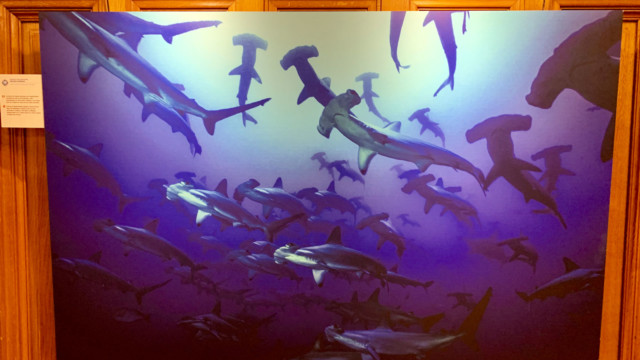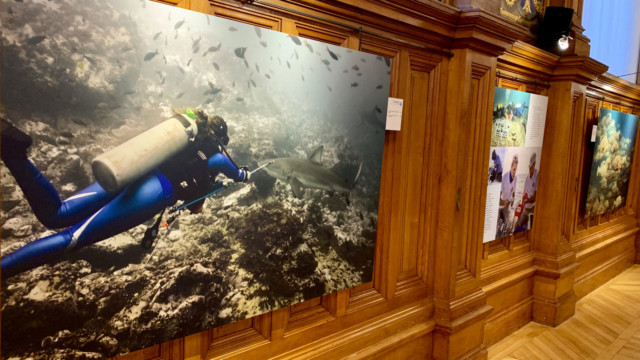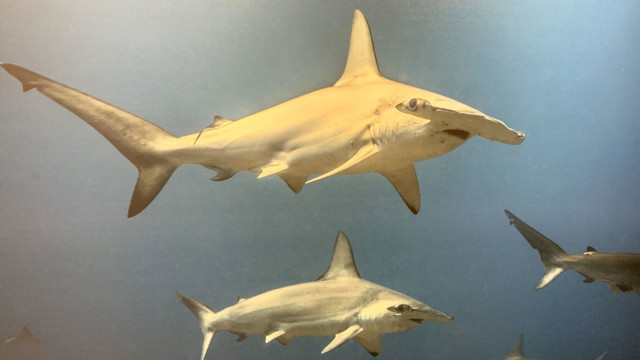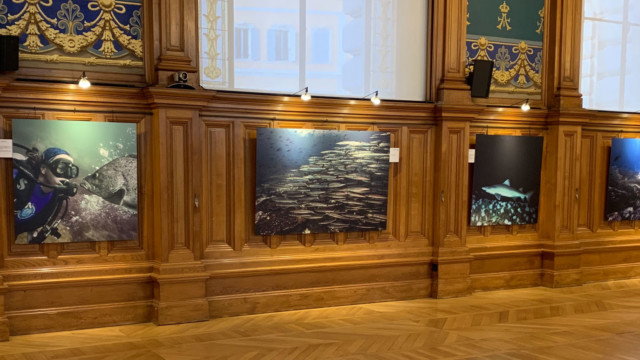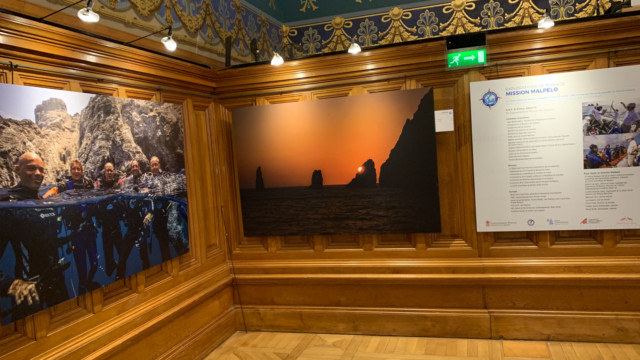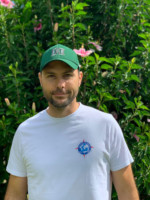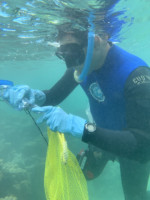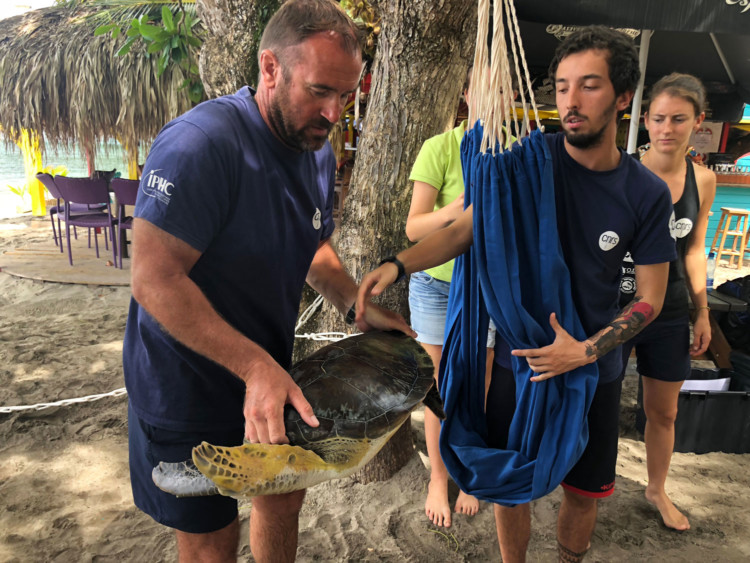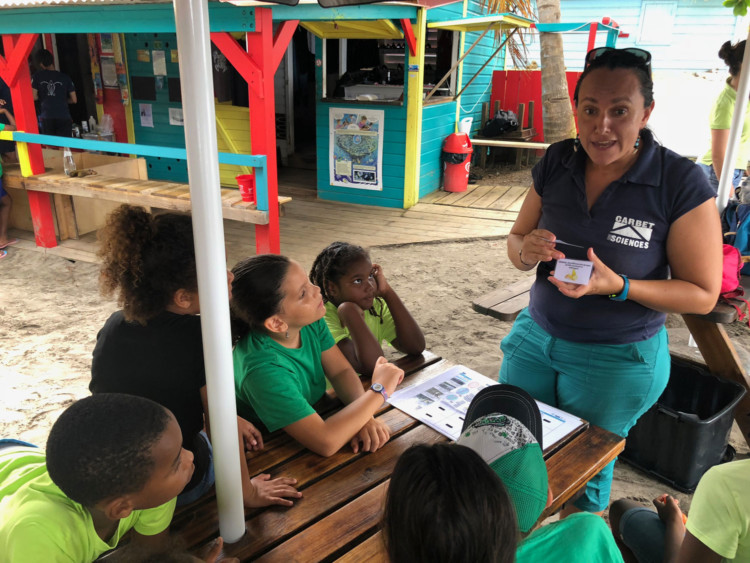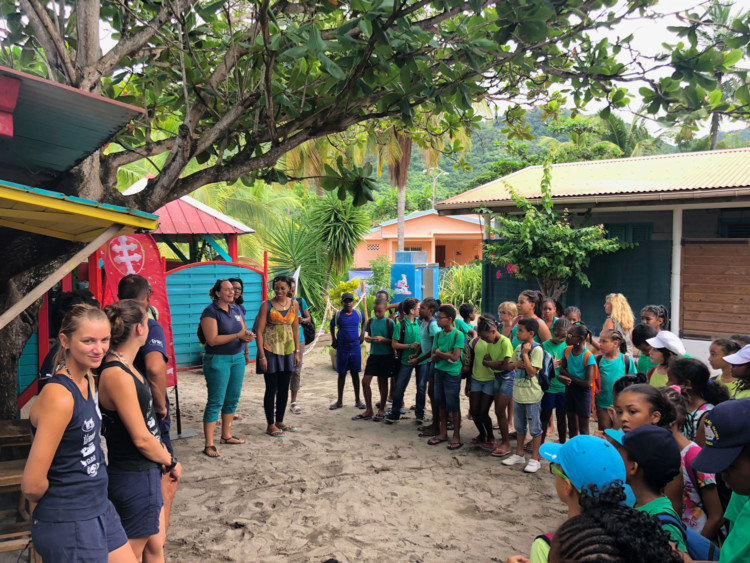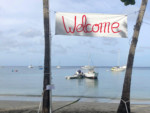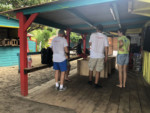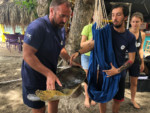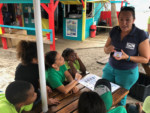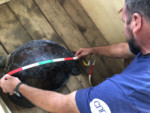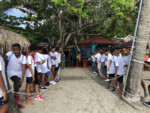Photography exhibit about Monaco Explorations’ « Malpelo mission » has started at the oceanographic museum of Monaco.
A few months ago « Monaco Explorations » took to Malpelo (Colombia) an international group of scientists.
Malpelo is a volcanic island in the middle of nowhere in the Pacific Ocean. But this island is like an oasis with a very rich biodiversity which has to be understood to be protected. Go to the oceanographic museum of Monaco and discover the scientists work about eDNA and sharks in this beautiful area which has been declared in 2006, UNESCO’s world heritage site.
Dr. Francois Seneca is a Senior Scientist at Centre Scientifique de Monaco. He is a native of Monaco, and studied coral reefs around the world for almost 18 years before returning to work at CSM.
Seneca completed his Bachelors of Science at the University of Hawaii from 2001 – 2004. He wrote his senior thesis on abnormal growths on corals, advised by Dr. John Stimson, who was his coral reef ecology professor. His senior project, on which the thesis was based, was conducted here at HIMB.
After his undergraduate studies, Seneca returned to Monaco for an internship at CSM before attending James Cook University in Australia for his PhD in biochemistry and molecular biology. Following that, he held a post-doc position at Stanford University’s Hopkins Marine Station in Monterey Bay, California, USA where his work focused on the effects of climate change on corals. Next, he took a post-doc positions at UH’s Kewalo Marine Lab and finally at the Smithsonian Marine Station at Fort Pierce in Florida, USA.
Now, as a Senior Scientist at CSM he is working on the development of the Aiptasia sea anemone as a model for host-pathogen interactions from corals to humans.
If you are interested in Francois’ work you can fseneca@centrescientifique.mc
Monaco Explorations is on mission in Les Anses d’Arlet, Martinique from October 2nd – October 12th, 2018. Together with CNRS and Ifremer, we are working to capture turtles and collect data and samples. The information obtained helps with developing and implementing more effective threat mitigation measures. While we are working on the scientific project, Carbet des Sciences and our partners at Institut Océanographique are hosting local student groups participating in Martinique’s ‘Marine Educational Area Program’ to provide education and experience relating to turtle conservation.
The scientific project is conducted in partnership with local institutions and is part of the National Action Plan (NAP) for the Protection of Marine Turtles in Martinique (coordinated by the Office National des Forêts (ONF) and Direction de l’environnement de l’Amenagement et du Logement (DEAL) Martinique).
The objectives of the project are:
- To study the trophic ecology of the three marine turtle species (Green Turtle, Hawksbill, and Leatherback)
- Follow their population dynamics (capture-marking-recapture) on areas of development and laying
- Monitor the growth of immature individuals
- Assess the age/ aging rate of individuals in relation to the quality of the habitat
- Determine the energy expenditure allocated to each activity in relation to the characteristics of the habitat
- Identify the species consumed and their energetic quality
- Study the role of Green Turtles in the expansion, stabilization, or disappearance of Halophila stipulacea (invasive phanerogam) in Martinique and the French West Indies
- Study the impact of contaminants on the physiology of sea turtles
- Study the genetic diversity of immatures of each species on developmental areas
- Learn migration strategies according to oceanographic conditions

We are on mission in Les Anses d’Arlet, Martinique from October 2nd – October 13th, 2018. Together with CNRS and Ifremer, we are working to capture turtles and collect data and samples. The information obtained helps with developing and implementing more effective threat mitigation measures. While we are working on the scientific project, Carbet des Sciences and our partners at Institut Océanographique are hosting local student groups participating in Martinique’s ‘Marine Educational Area Program’ to provide education and experience relating to turtle conservation.
The scientific project is conducted in partnership with local institutions and is part of the National Action Plan (NAP) for the Protection of Marine Turtles in Martinique (coordinated by the Office National des Forêts (ONF) and Direction de l’environnement de l’Amenagement et du Logement (DEAL) Martinique).
The objectives of the project are:
- To study the trophic ecology of the three marine turtle species (Green Turtle, Hawksbill, and Leatherback)
- Follow their population dynamics (capture-marking-recapture) on areas of development and laying
- Monitor the growth of immature individuals
- Assess the age/ aging rate of individuals in relation to the quality of the habitat
- Determine the energy expenditure allocated to each activity in relation to the characteristics of the habitat
- Identify the species consumed and their energetic quality
- Study the role of Green Turtles in the expansion, stabilization, or disappearance of Halophila stipulacea (invasive phanerogam) in Martinique and the French West Indies
- Study the impact of contaminants on the physiology of sea turtles
- Study the genetic diversity of immatures of each species on developmental areas
- Learn migration strategies according to oceanographic conditions
It is believed that the exceptional longevity of coral is a hindrance to its ability to adapt to climate change. Is it doomed ? A study published in Sciences Advances by Centre Scientifique de Monaco holds out some hope … you can read that in French and English in La Gazette de Monaco.
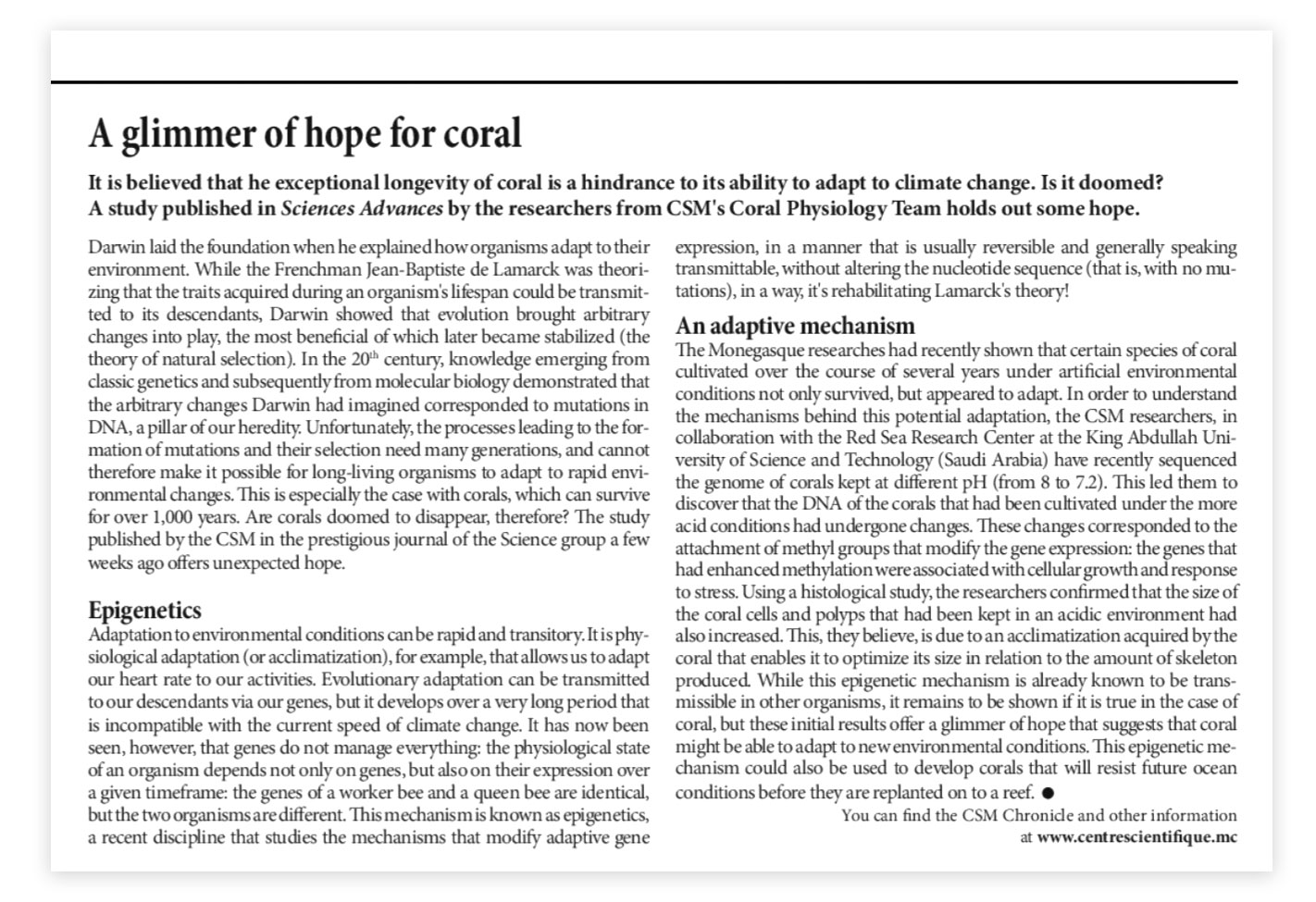
Monaco Exploration, the Scientific Center of Monaco and Geomar team-up to collect deep sea water corals in Norway on board the RV Poseidon
Leaded by Dr. Janina Busher from GEOMAR institute, one of the goals of this mission is to collect scientific data about the deep sea coral Lophelia pertusa at four different locations of Norwegian coastal and offshore waters.
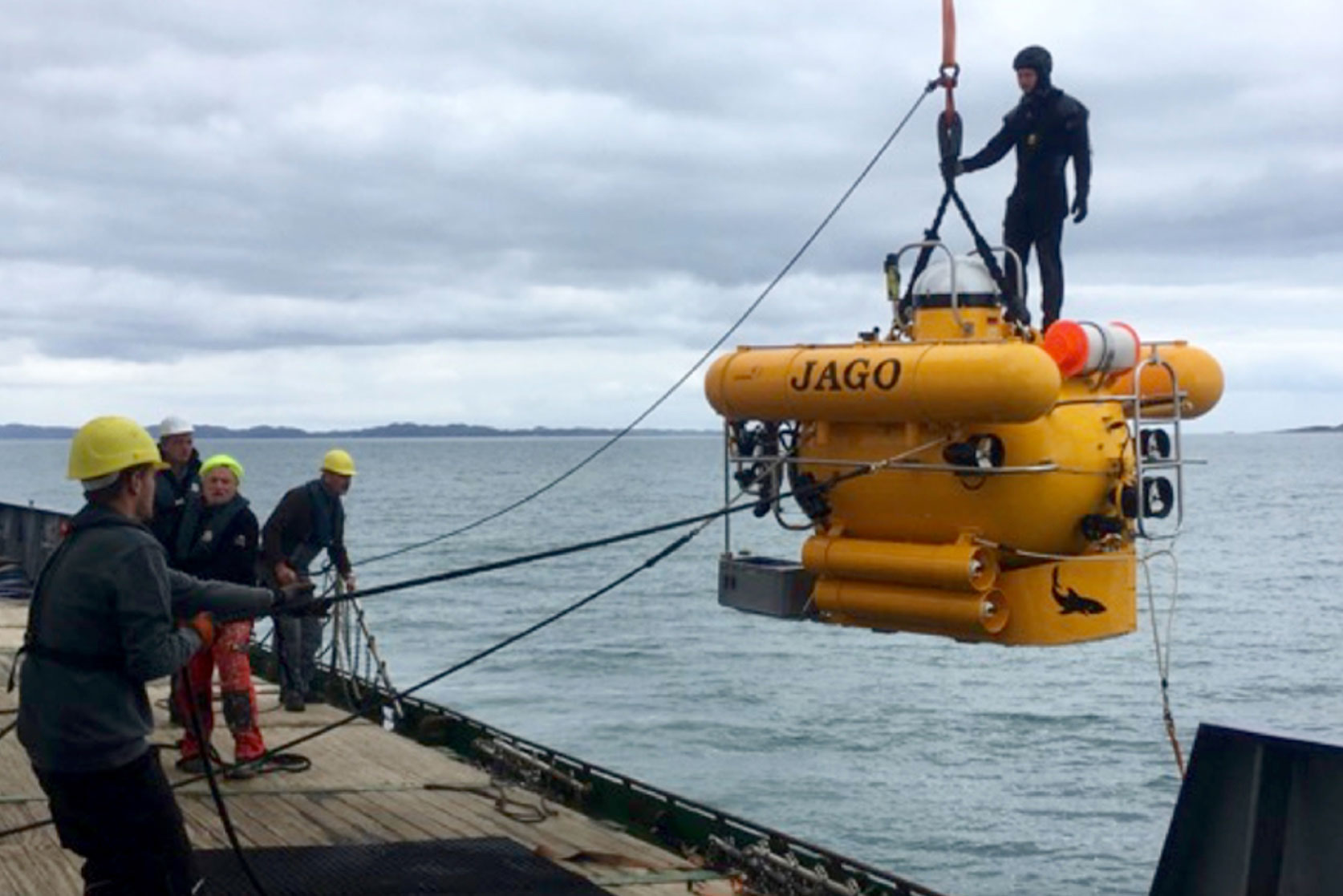
Dr. Christine Ferrier Pagès and Dr. Stéphanie Reynaud, with the help of Magali Boussion, technician in the Coral Ecophysiology team, are working since several years on the ecophysiological aspects of deep sea corals and are happy to extend their knowledge to Norwegian one’s.
The scientific group of Monaco has several aims during this mission: the first consists in collecting corals in order to determine, back at the CSM laboratories, the lipid, protein and carbohydrate contents of the coral tissue. The other aspects are onboard experiments including coral incubations in small glass chambers to assess the carbon budget and the mucus degradation. The last goal is to perform feeding experiments with 13C and 15N labelled prey. The team is also participating to the general work on board.
Coral sampling is conducted with the submersible JAGO from GEOMAR institute, which can go to a maximum of 400 meters depth. For each dive, a small robot – linked to JAGO – collects the samples needed in a bucket. The entire dive is recorded by video from a camera fixed on the submersible. For water collection, a CTD (device of 12 bottles of 10L allowing to take the sea water) is deployed several times during the day on the reef from where the coral samples have been collected.
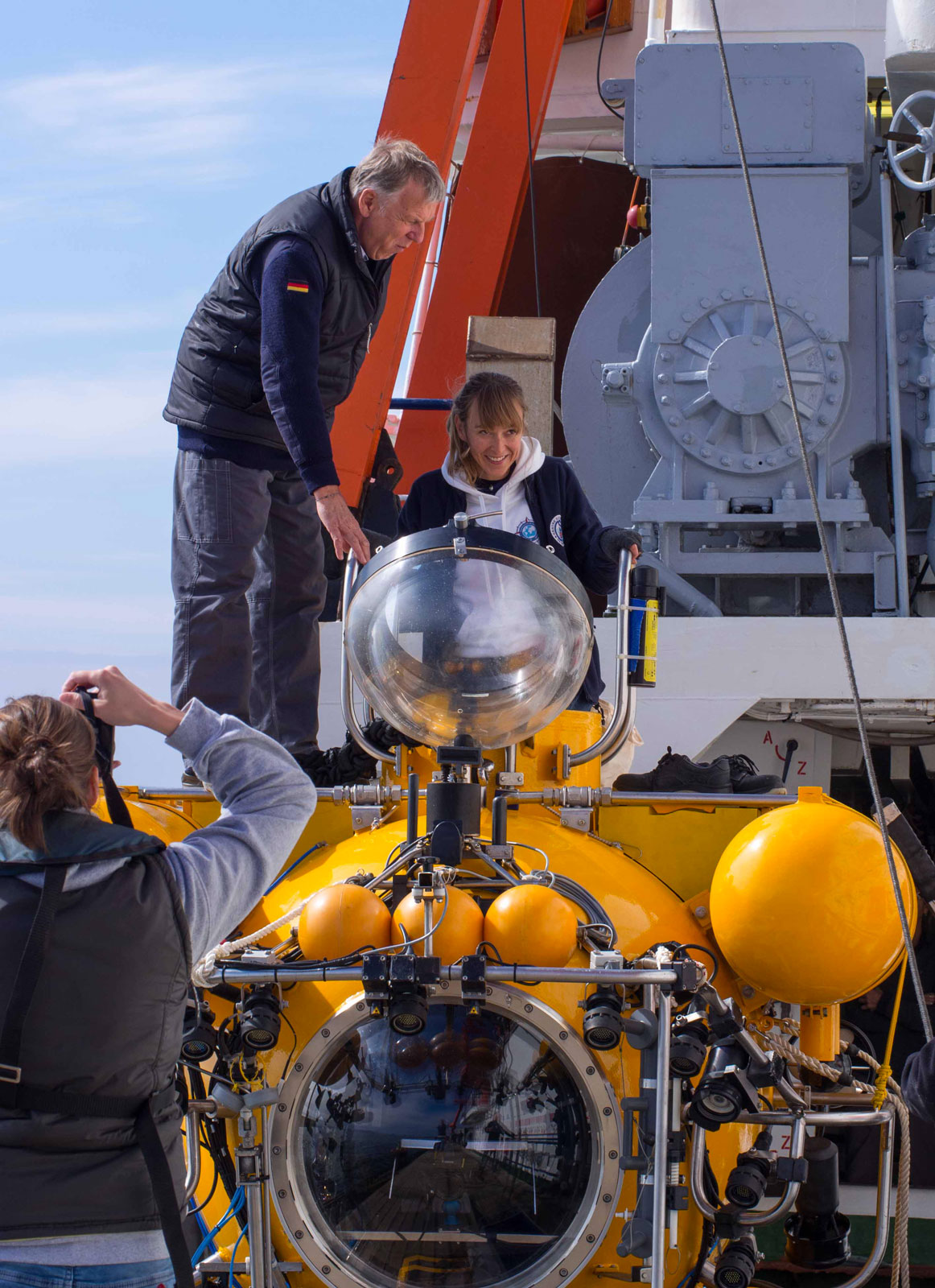
Diseased corals are the research target for our next mission in Hawaii, conducted in collaboration with Centre Scientifique de Monaco (CSM) and TARA Expeditions Foundation.
CSM will study diseased corals in Hawaii from June 15-25, 2018.
In past decades scientists have observed drastic increases of coral disease, showcasing the negative effects fo climate change and ocean acidification on the health of marine ecosystems. Unfortunately, the close connection between the future of the oceans and climate leads us to expect that diseases affecting the reefs will continue to increase. Studying these major changes in marine ecosystems has been the driving force for the collaboration between HSH Prince Albert II and the Tara Expedition Foundation since 2009 and more recently with the launch of Monaco Explorations in 2017.
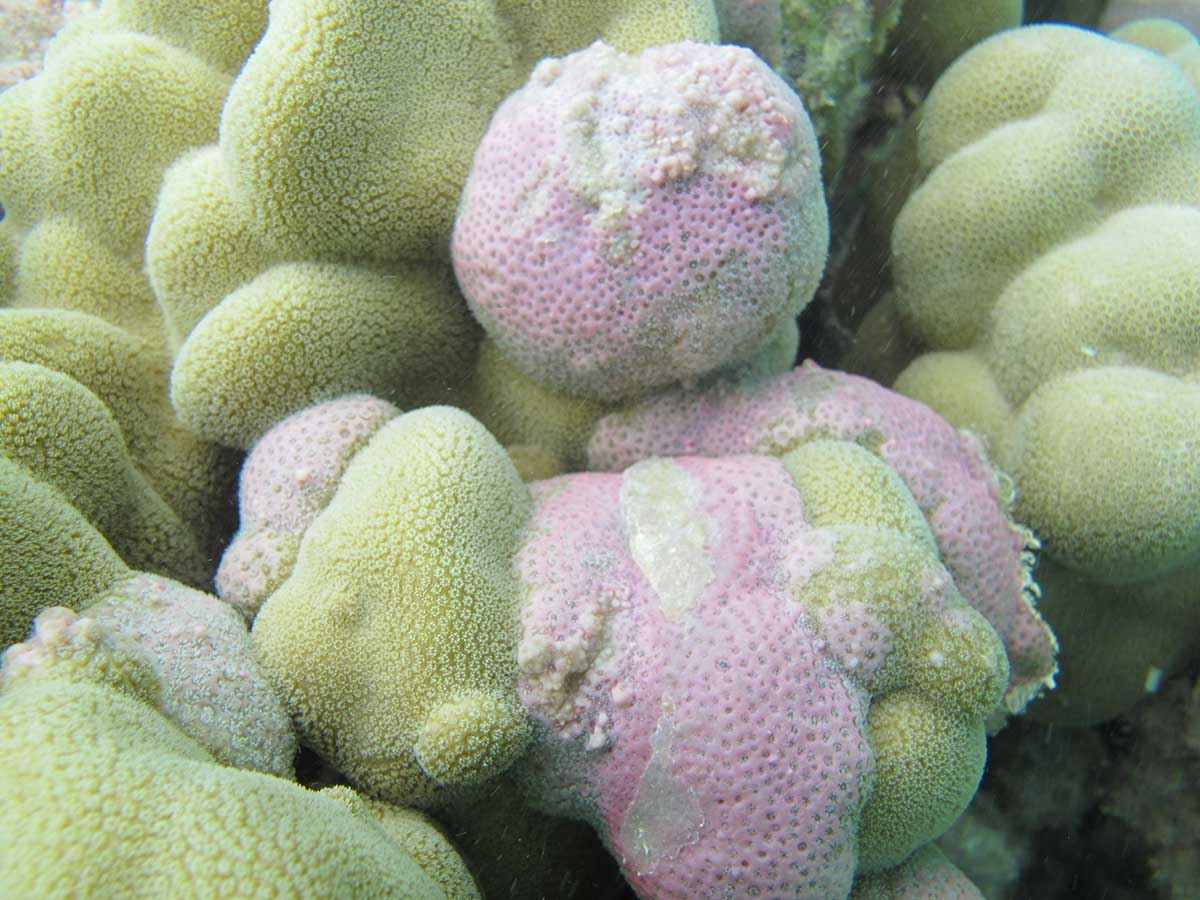
With experts in how tropical, Mediterranean and deep coral reefs function, the Scientific Center of Monaco has been a partner of the Tara Pacific Expedition 2016-18. In Hawaii, the CSM team will take advantage of the visit of the Tara in Kaneohe Bay, to conduct field work focusing on coral abnormal growth for the Monaco Explorations in collaboration with the Hawaiian Institute of Marine Biology of the University of Hawaii.
From the 15thto the 25thof June, the CSM team will concentrate their work on “tumors” found on corals, a phenomenon with poorly understood origins that affects more that 40 species of Scleractinian corals in the Indo-Pacific and Caribbean regions. This disease is characterized by an abnormal growth on a distinct area of the colony. Although the growths are known by some scientists as “tumors”, their malignancy remains to be determined. Yet, the origin of this disease may involve the bacteria living on the abnormal tissues.
From coral to human health
Similar to classical model organisms, these “tumors” represent a unique opportunity for multiple studies that would enrich our knowledge of coral biology, as well as coral innate immunity, which shows close similarities to humans. In fact, studying diseases to understand how healthy organisms function was the central tenant of experimental medicine practiced in the middle of the 19thcentury by Claude Bernard, the father of modern medicine. The CSM researchers will apply the same approach to understand corals today.
Beyond the importance of this project to the future of coral reefs, this work will also help us better forecast future biomedical or biological problems, such as the links between diseases and the interactions of host-pathogens. Thanks to its double capacity in coral and medical biology, the CSM is a unique laboratory possessing the expertise to study these abnormal growths from the colony to the gene.
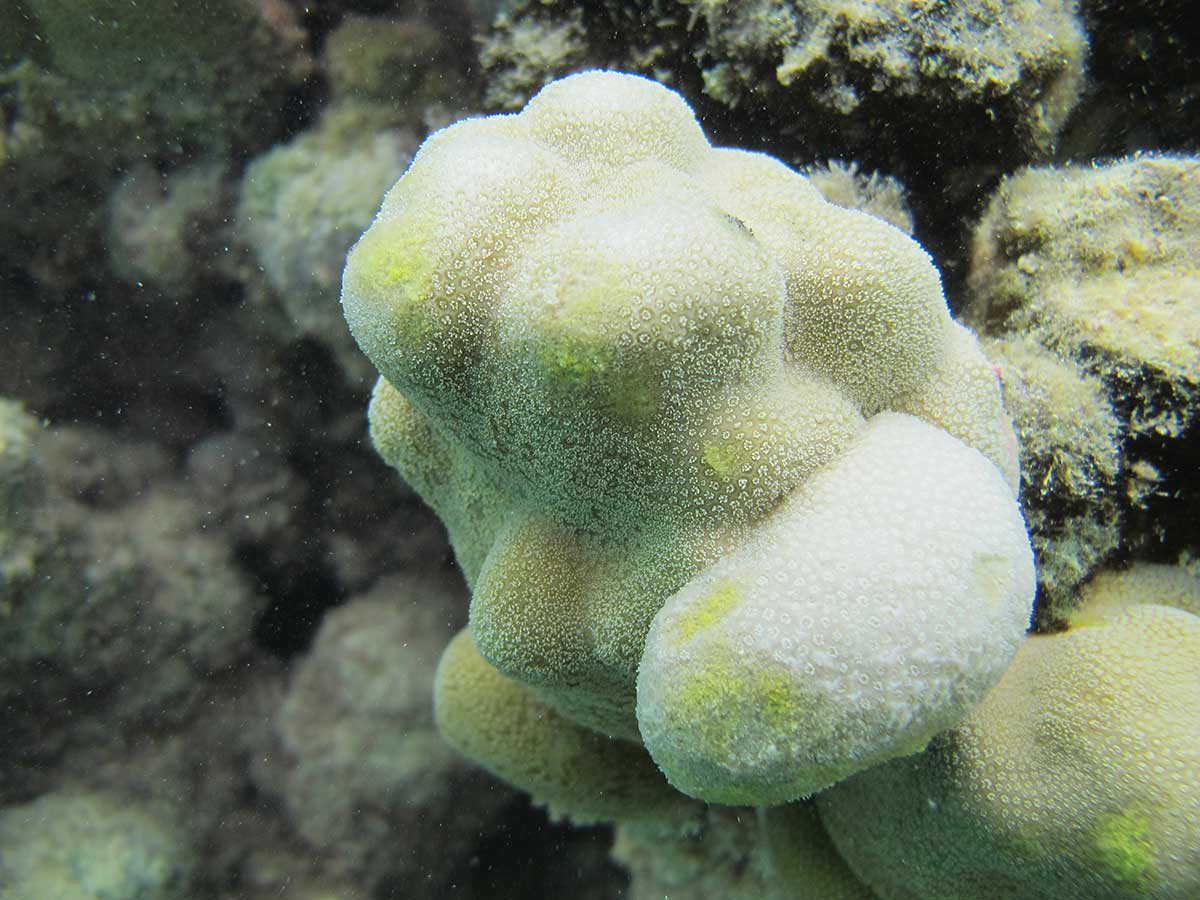
Some samples from healthy and affected coral colonies will be immediately processed to extract molecules of interest in the laboratory of the Hawaiian Institute of Marine Biology (HIMB), before being shipped to Monaco. Others samples will be quarantined and shipped live to Monaco to be kept under controlled conditions in the laboratory. In total 120 samples will be collected from the three main reef-building coral species in Hawaii: Porites lobata, P. compressa, and Montipora capitata.
Monaco will co-chair the International Coral Reef Initiative (ICRI) in July 2018
As 2018 was announced the International Year of the Coral Reefs, this mission conducted by the CSM as part of the Monaco Explorations in collaboration with Tara and the FPA2, constitutes also the first contribution of the Principality of Monaco as co-chair of the ICRI. ICRI was founded in 1994, with the goal to internationally promote knowledge and solutions allowing the preservation of coral reefs and associated ecosystems. From July 2018 until 2020, Monaco, Australia and Indonesia will co-chair the organization. One of the goals to meet in 2020 is to produce a global report on the state of these ecosystems of considerable ecological and socio-economical importance.

A week of events about oceans : program, speakers, movies … discover everything here
https://www.monacooceanweek.

 One year ago today we kicked off Monaco Explorations at musée océanographique de Monaco with a press conference and a room full of support from the community. It has been a good year with missions in Madeira, Cabo Verde, Transatlantic, Martinique and Malpelo. We are proud to support science and help to protect our oceans.
One year ago today we kicked off Monaco Explorations at musée océanographique de Monaco with a press conference and a room full of support from the community. It has been a good year with missions in Madeira, Cabo Verde, Transatlantic, Martinique and Malpelo. We are proud to support science and help to protect our oceans.
Ushuaïa TV produced the first documentary film about Monaco Explorations work in Macaronesia. Watch the premier December 8th at 20:40 on Ushuaïa.
